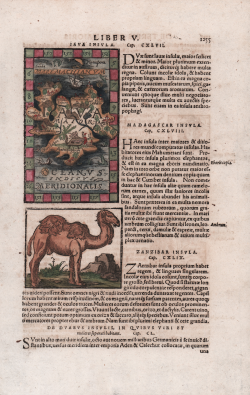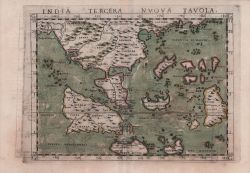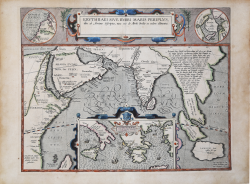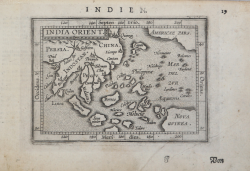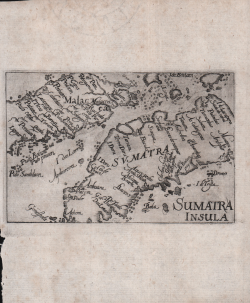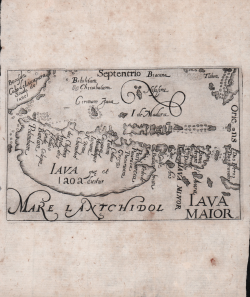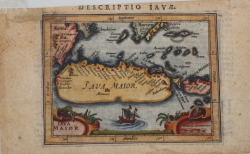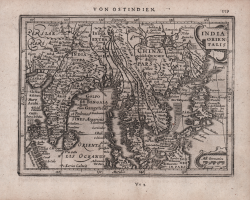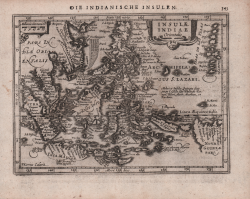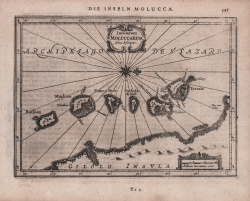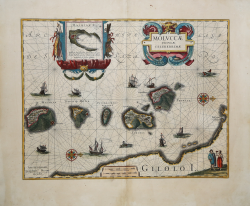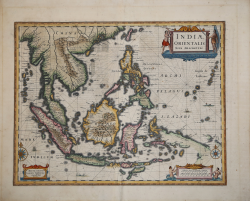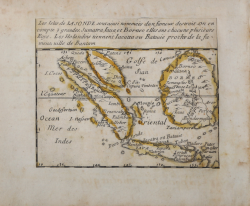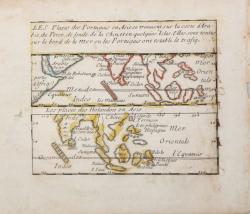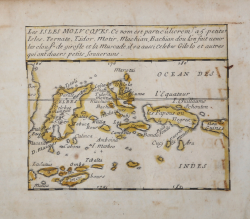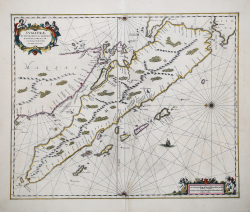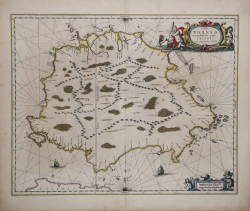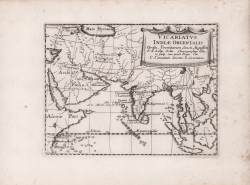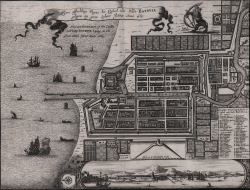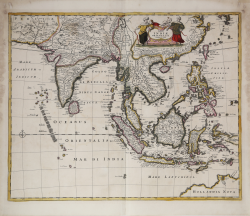India Tercera nuova tavola
Girolamo RUSCELLI
Code:
s28379
Measures:
265 x 200 mm
Year:
1561 ca.
Printed:
Venice
Erythraei Sive Rubri Maris Periplus
Abraham ORTELIUS
Code:
S4773
Measures:
475 x 370 mm
Year:
1597 ca.
Printed:
Antwerpen
India Orient.
Jan van Keerbergen
Code:
ms3868
Measures:
120 x 850 mm
Year:
1601 ca.
Printed:
Frankfurt
Descriptio Javae
Jodocus HONDIUS Jr.
Code:
MS2160
Measures:
135 x 95 mm
Year:
1616
Printed:
Amsterdam
India Orientalis
Johannes JANSSONIUS
Code:
S48191
Measures:
193 x 145 mm
Year:
1628 ca.
Printed:
Amsterdam
Insulae Indiae Orientalis
Johannes JANSSONIUS
Code:
S48192
Measures:
195 x 144 mm
Year:
1628 ca.
Printed:
Amsterdam
Insularum Moluccarum Nova Descriptio
Johannes JANSSONIUS
Code:
S48193
Measures:
200 x 145 mm
Year:
1628 ca.
Printed:
Amsterdam
Molvccae Insula Celeberrimae
Willem Janszoon BLAEU
Code:
s14065
Measures:
480 x 370 mm
Year:
1630 ca.
Printed:
Amsterdam
Indiae Orientalis Nova Descriptio
Johannes JANSSONIUS
Code:
ms5329
Measures:
500 x 390 mm
Year:
1640 ca.
Printed:
Amsterdam
Les Isles de La Sonde…
Pierre DUVAL
Code:
S39995.20
Measures:
122 x 100 mm
Year:
1656 ca.
Printed:
Paris
Les Places des Porturgais en Asie…
Pierre DUVAL
Code:
S39995.21
Measures:
120 x 100 mm
Year:
1656 ca.
Printed:
Paris
Les Isles Molucques…
Pierre DUVAL
Code:
S39995.23
Measures:
120 x 100 mm
Year:
1656 ca.
Printed:
Paris
Sumatrae et Insularum Locorumque Nonnullorum Circumiancentium...
Johannes JANSSONIUS
Code:
S40046
Measures:
520 x 420 mm
Year:
1659 ca.
Printed:
Amsterdam
Insula Borneo et occidentalis pars Celebis cum adiacentibus Insulis
Johannes JANSSONIUS
Code:
S40038
Measures:
535 x 430 mm
Year:
1659 ca.
Printed:
Amsterdam
Vicariatus Indiae orientalis
Augustin LUBIN
Code:
ms986
Measures:
170 x 120 mm
Year:
1659
Printed:
Paris
Ware affbeeldinge Wegens het Casteel ende Stadt Batavia gelegen opt...
Jacob van MEURS
Code:
S45314
Measures:
350 x 265 mm
Year:
1669
Printed:
Amsterdam
Tabula Indiae Orientalis Emendata a F. de Wit
Frederick de WIT
Code:
S4899
Measures:
575 x 465 mm
Year:
1680 ca.
Printed:
Amsterdam

